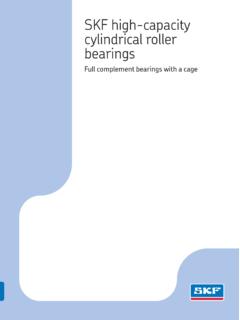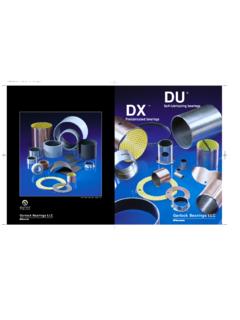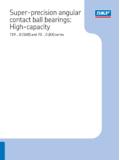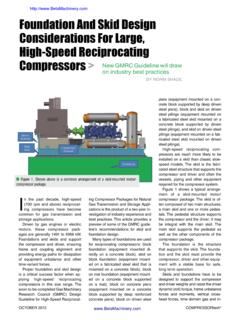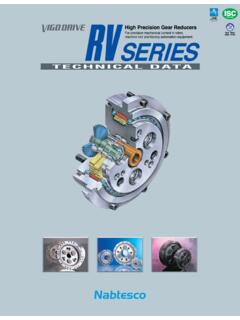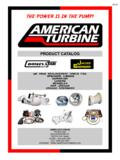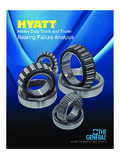Transcription of OAD CAPACITIES & LIFE CALCULATIONS
1 bearing SELECTION. LOAD CAPACITIES & life CALCULATIONS . Simple life /load estimations can be derived from the Radial Load chart. However, if a more specific estimation is desired, the life of a bearing can be calculated by the following formula: L10h = ( )3. C. P x 16,667. n Where: L10h life Hours C = Basic Load Rating (lbf). P = Equivalent Radial Load (lbl). n Speed (RPM). L10h equals the number of hours that 90% of an identical sample group, operating under identical and ideal conditions, will operate without failure. Since actual field conditions seldom, if ever, match the ideal conditions used in the calculation of L10h, compensation for slip fit (most mounted bearings), dust, vibration and shock loading must be considered. Since most EBC products are mounted units, it is helpful then to adjust the L10h number by .46 for slip fit applications and further reduce this number by 50-70% to compensate for other operating conditions. Example: bearing : UCP205-16 - with slip fit on to ground shafting.
2 , Application: Farm equipment experiencing variable shock loading. L10h - 10,000 hours Adjustment would be: 10,000 x .46 x .3 = 1,380 hours Light and or infrequent vibration/shock loading may not require as much adjustment; however, EBC always recommends very generous safety factors for maximum bearing longevity. Additional adjustment may also be required if the bearing is directly exposed to heavy contaminants. The seal type will then influence the amount of this additional adjustment. It is assumed that the bearing will be operated within the confines of its published temperature limits, and that it will be relubricated properly. Note: Caution is advised if in the use of the L10 formula, extremely high or low hours are derived. Thrust: The above CALCULATIONS assume that there is no consequential thrust load present; therefore, the actual radial load equals the Equivalent Radial Load. It is important to note, however, that thrust, or axial force can dramatically affect the life of a mounted ball bearing .
3 It is also significant to note that, outside of ideal testing conditions, and without field experience, many thrust applications are difficult to realistically quantify. Therefore, as thrust exceeds approximately 25% of the Basic Load Rating, of there exists a combination of thrust and speed, please contact EBC for technical assistance. 4-21.

